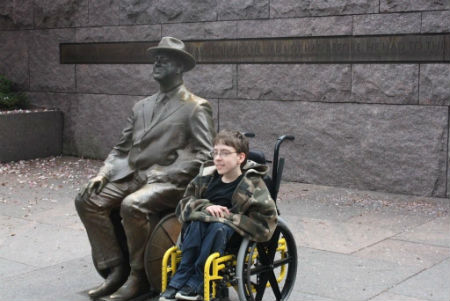The New Year – Five Reasons to Stay Optimistic
By Neil Earle
 Carli Lloyd and Hope Solo: two who still believe.
Carli Lloyd and Hope Solo: two who still believe.(Ed. Note – this article appeared for the Fourth of July but seems to fit as we head into a new year).
An Associated Press poll says 57% of Americans feel 2015 was worse than 2014. Mass shootings both by terrorists and individual actors weighed down most respondents. The year ended with a rash of bad weather with this reporter just missing some of the tornadoes that ripped through the Mid-South in late December.
Still Americans are known worldwide as a resilient and optimistic people. Recently a political advisor to the Presidents, David Gergen, introduced these five points in “Parade” magazine.
Here are Parade’s five reasons to be optimistic going forward.
First, breakthroughs in technology are unlocking a vast storehouse of energy in this country. You’ve probably seen ads already touting the USA as the world’s coming energy leader. This means that by 2020 the U.S. could be the new Saudi Arabia of energy. ”With universities such as MIT devoting more time and resources to energy resources to energy research, more breakthroughs are ahead to make us both greener and more energy independent.”
Empty Quarters Revisited
Pundits still remark how in the last decade the Great Wall of China and the lights from energy projects in North Dakota were apparently the only human activities visible from the moon.
How surprising this trend. I know North Dakota. My wife and I drove thousands of miles there in the 1970s in the service of parishioner who were scattered from Williston to Bottineau. We had a Bible Study in Bottineau for a couple of years. I loved the wide open spaces and the peace and quiet in the Empty Quarters even if some of my supervisors wondered what I was doing, a Canadian pastor south of the border down Bottineau way.
Lesson? How quickly things can change in this world. One lesson I took away as a history student from the 1960s was that “present trends never continue.” In spite of fair environmental concerns, energy is still a key to the growth of nations and the US is still a country with abundant resources to maximize for the next decades.
Getting Smarter!
Second, flowing a lot from this and synergizing this trend is the American dominance of higher education. Oh, I know, the public school system is languishing in many areas but when it comes to top-level graduate level research the U.S. leads the world, especially the high-tech digitized advances and inventions transforming our world.
 Science is making a come-back and just in time – still from The Imitation Game on Alan Turing and the computer.
Science is making a come-back and just in time – still from The Imitation Game on Alan Turing and the computer.Remember Y2K?
What happened to all the technology invented to deal with the prophesied worldwide computer malfunction? It was sold to India and Indian innovators soon became known as the premier Mr. Fix It/service provider for all of us. But…many of those bright young minds want to come here, to America where they are freer to innovate and take the logical next steps in their careers. “America still sits at the boundary of technological excellence,” says Ramalinga Raju, an aggressive new business leader in India. ”You are, for now, still the best architects we could imagine.”
Raju knows that American banks and venture capitalists – for all their mistakes and perhaps deserved negative image – are still able to fund the innovation that leads to ever new breakthroughs needed to combat climate change or tackling the challenge of declining food stocks, for example. The British historian Paul Johnson wrote: “The Americans are above all things a problem-solving people.” That quote used to adorn my wall when I taught history at Citrus College. It is god not to be swallowed up by over-fixating on the present. After all, Alaska used to be called “Seward’s Folly” from the Secretary of State who bought it from the Russians.
 Movies often tap the future and Tomorrowland is a subtle call for youth to apply their brain power to solving the Big Problems.
Movies often tap the future and Tomorrowland is a subtle call for youth to apply their brain power to solving the Big Problems.“Knowledge is Power”
The otherwise disappointing movie “Tomorrow” out this year starring George Clooney hinted at the knowledge breakthroughs that can take place when bright minds pool collaboratively to get things done. It hinted at global warming, nuclear proliferation and environmental degradation as in the cross hairs of the best and brightest world youth from here and abroad just clamoring to get started. Another movie, “The Imitation Game,” made heroes out of Alan Turing and the small coterie of brilliant geniuses who created the first workable computer. The public hasn’t lost it’s fascination for the white-coated innovators who helped win World War Two and laid the groundwork for the computer age and so much more.
Brains matter, now more than ever.
So be encouraged by this fact: “Since 1970,” writes Gergen, “more than 60% of Noble laureates in medicine, science, and economics have been Americans.”
Fourteen of the top 20 universities are in the United States. It may be a different story in your local high school but American universities are awash with talent having attracted the best and brightest to our shores. British terror expert Peter Bergen now works for the Rand Corporation. Of the two fine doctors I have had, one is from Nepal the other from Ethiopia. Some are offered salaries they simply can’t refuse. In many fields this is true. (And, alas, may be one reason for student indebtedness).
At the beginning of the scientific era in the 1600s Francis Bacon said “knowledge is power” and millions of the world’s ablest researchers and inventors view America as still the best place to deploy creativity and innovation in the country that – amazing for its size – still maintains the rule of law and world’s most stable infrastructure.
“Give me your Bright, your Bold”
A third reason for optimism flows from the implications of points one and two – smarter and more intentional immigration policies. In the media at least, the United States Congress seems hopelessly hung up on anything to do with immigration, but in fact, claims Fareed Zakaria of CNN, net immigration from Mexico is slowing down as that country begins to enter a new development phase. What wise men are counseling and American political leaders are seeing is the strategic value of the “most favored immigrant” policies practiced by Canada and many European countries. This means aligning polices so that talented foreigners can find it easier to enter the still-lucrative and fairly wide-open American market-place.
Everyone knows what happens when talented, motivated immigrants arrive. They typically start new companies and businesses and see possibilities that the native-born don’t often see. While the fall of Vietnam to Communists in 1975 was covered reflectively in the United States this 30th anniversary year, we do not have to look too far to see at least some encouraging spinoffs. Anyone driving in the suburbs of Los Angeles (“capital of the Third World”) knows how energetic Vietnamese have set up everything from restaurants to automotive stores. According to “Parade” behind the nasty public rhetoric, both political parties are slowly seeing the need for this “smart track” immigration model.
It’s already here in part, an incoming stream which keeps the U.S. younger than its competitors – Germany, the U.K., China and Japan. This will be an A-level advantage going into a world moving at the speed of twitter.
 Nobody called Franklin Roosevelt "handicapped."
Nobody called Franklin Roosevelt "handicapped."Millennials Rising
Fourth, as a result of these trends feeding into and off each other, the United States is still innovating in advances in biology, information, technology, and – yes – even manufacturing. Los Angeles builds everything from caskets to cell phones in spite of press coverage to the contrary. The drills that rescued trapped miners in Chile were made here. Advances in medicine are helping us live longer. American financial streams are funding the Research and Development that spills over into Canadian drug companies which are selling prescriptions invented and refined in America.
A fifth incentive to positivity is an eager and newly motivated work force. The silver lining from eleven years of wars in the Middle East, says Gergen, is the appearance of veterans ready to jump into the job pool. Those who have made the transition are dazzling employers with their gung ho work skills and their ability to buckle down and work together on projects that advance the company product. When you’ve served on an aircraft carrier that holds 5000 men and women, teamwork is learned early. Loyalty and responsibility to others becomes second nature. Some of our injured vets have become very impressive role models indeed.
 Iraq Vet Gregory Gadson was a star of "Battleship" and a bilateral above the knee amputee – but don't tell him that!
Iraq Vet Gregory Gadson was a star of "Battleship" and a bilateral above the knee amputee – but don't tell him that!In the movie “Battleship” a soldier on prosthetic limbs fought the bad guy robots hand-to-hand in the crucial scene. Look out for a rising cohort of “blade-runners,” (without the bad connotations) – savvy vets with internalized skills who have learned to work around tough problems and who can inspire the next generation much as the polio-stricken Franklin D. Roosevelt inspired his generation.
We must remember that one of the primary earmarks of the American spirit is to effectively innovate with new technology. American footprints still dot the moon, Wal-Mart’s light bulbs point to new dimensions in energy efficiency, Face Book and Twitter didn’t exist twelve years ago but now the world looks in.
Reinventing Community
Experts say the U.S. economy usually reinvents itself every 15 years or so. This is where the slow job market facing our newly educated (if debt-laden) Millennials could be a blessing in disguise. They are already passing up Wall Street jobs where more of the same means submitting to a stifling pecking order. Twenty-or-thirty-somethings are taking on instead socially responsible careers such as “Teach for America.” Nearly one in five college seniors have applied to teach two years in underprivileged areas for lower pay. This gives fresh life to a program that began in the 1980s with a teenager girl’s senior thesis. It has become a training school for out-of-work or underemployed 25 year olds.
In 1938, nearly 80 years ago, a popular song hit the airwaves that began with “As the storm clouds gather/ Far across the sea.” That song with its elegy-like opening was “God Bless America” and clouds there surely were – Hitler and the Axis were on the march and the depression raged on. But as we all know, the Greatest Generation rose to that challenge – and how!
Today’s storm clouds are also real and might seem to throttle anyone’s optimism but storm clouds, after all, nourish the lightning bolts that charge the soil. Millions of young people are now thirsting for action, eager to apply those skills that have cost them so much. This is one reason the Indian-born journalist, Fareed Zakaria, author of The Rise of the Rest – a 2008 look at the growth of America’s competitors which seemed so inevitable a decade ago (but are now faltering somewhat) – is still optimistic about his adopted country. “America has at least one good chapter yet to write,” he concluded one of his televised essays.
Depend on it – Americans love a challenge and wise far-sighted leadership is already channeling those wide-spread energies into a brighter future for all. This makes the next Presidential election important. Leadership is needed that can mobilize the hidden opportunities of these Locust Years so many are passing through. Perhaps the greatest reason for optimism is that military and economic stagnation have made the public eager for action again. Or to use another language, an angel may be riding the storm. In the words of one American innovater – Tough times pass but tough people don’t.